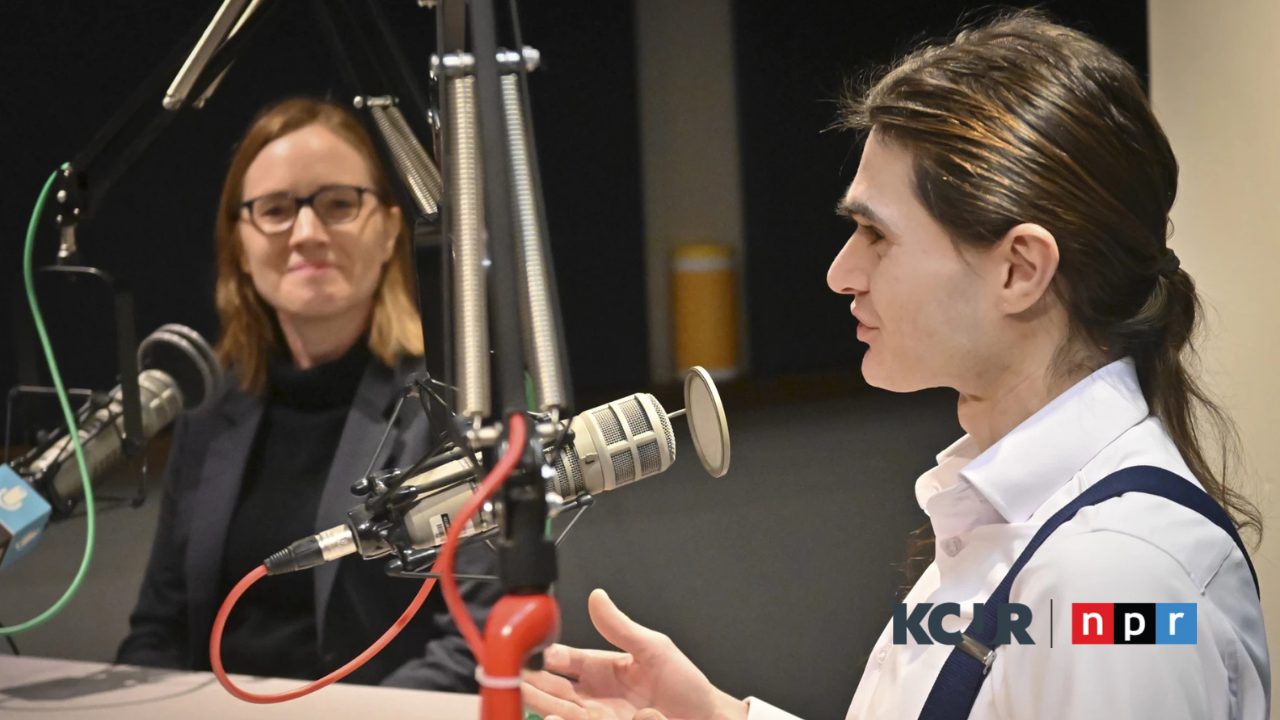KANSAS CITY, MO—The silkworm, prized for the extremely long single thread of silk that makes up its cocoon, has been domesticated for over 5000 years. Although it has been the long-standing basis of the sericulture or silk farming industry, the silkworm wasn’t often the subject of biological research until the early 1900s. Now, the silkworm is one of the most well-studied lepidopteran model systems worldwide, and a recent arrival at the Stowers Institute for Medical Research.
When it comes to foundational research such as that done at Stowers, there are commonly known model organisms that have been used consistently for decades—fruit fly, mouse, yeast, and zebrafish, for instance. Newer additions include the starlet sea anemone, apple snail, and killifish. In May of 2020, Investigator and American Cancer Society Research Professor Scott Hawley, PhD, and his research team introduced the silkworm, or Bombyx mori, to Stowers.
Its rich genetic resources include 400 visible mutations, affecting many fundamental aspects of the insect’s life cycle, which have been mapped to 28 pairs of chromosomes, far more than the four pairs in the fruit fly. The growing collection of world genetic stocks includes approximately 3000 genotypes, making the silkworm second only to the fruit fly for genetic research in insects.
Researchers also value benefits such as the silkworm’s large size, ease of rearing in the laboratory, short generation time, and clear boundaries between different developmental stages. The worm has a high reproductive rate as well—the female moth can lay around 500 eggs in several hours after mating. Hawley appreciates all of these but also loves the “beautiful eggs, hundreds of them, arranged in those four ovarioles like pearls in a necklace. This is egg biology on a silver platter.”
Hawley remembers first reading about research in silkworms as a graduate student, and the images never left his mind. Though he never used the silkworm himself, and his lab primarily studies the fruit fly, Hawley suggested it to Research Specialist Youbin Xiang, PhD, whom Hawley considers “a courageous scientist, a meticulous experimentalist and a terrific cytologist.” Xiang studies the process of meiosis—more specifically, the synaptonemal complex, a protein structure that forms during meiosis and is thought to mediate synapsis and recombination. Having so many more cells to study than in the fruit fly gives Xiang more opportunities to understand variations in the meiosis process, though like Hawley, he also appreciates the beauty of the organism, praising the “gorgeous meiotic chromosomes.”
The silkworm goes through five stages, called instars, before going into its cocoon, and Xiang studies germ cells from the larva in its 5th instar. He also allows some of the pupae to hatch into moths in order to get immature eggs from the female moth. The lifespan of the silkworm is short, approximately six to eight weeks from egg to moth. The moth itself, which does not eat or fly, will mate, lay eggs, and die within a week. Though many of the model organisms used at Stowers are bred and maintained on site, Xiang and Hawley decided to begin their research with fertilized eggs ordered online. They are grateful for the availability and low cost, another benefit of the species, but as the project continues, Xiang is considering the idea of building a colony at Stowers.
For all its benefits, the silkworm does have one downside: its diet and appetite. To support its quick growth, the larva is a voracious eater that exclusively eats mulberry leaves. One larva can eat five leaves per day, and that continues for up to four weeks. Xiang notes that finding mulberry leaves in Kansas City is very difficult from late fall to early spring. He supplements with artificial silkworm chow, but the worms grow more slowly than on a leaf diet.
Beyond genetic research like Xiang’s, genomic studies of the silkworm show that that some genes are highly similar (homologous) to certain genes related to human hereditary diseases, meaning that with support and continued research from scientists like Hawley and Xiang, the silkworm could someday become a model organism for studying human disease.
Certainly, the technology and expertise available in the scientific support centers at Stowers could help take silkworm research to a new level. In the US, the silkworm as a model organism has gone up and down in popularity. According to Hawley, recent improvements in tools such as antibodies and, specifically, microscopy, mean that researchers today can do even more with this genetic-rich species than in years past. Hawley would like to see a resurgence of silkworm research in the US and is doing what he can to encourage that, including spearheading a virtual Bombyx mori conference this month.
For more information about the Hawley Lab, please visit their website.
About the Stowers Institute for Medical Research
The Stowers Institute for Medical Research is a non-profit, basic biomedical research organization dedicated to basic research – the critical first step in the quest for new medical diagnostics, therapies and treatments. Jim Stowers, founder of American Century Investments, and his wife, Virginia, opened the Institute in 2000. Since then, the Institute has spent over one billion dollars in pursuit of its mission.
Currently, the Institute is home to about 500 researchers and support personnel, over 20 independent research programs, and more than a dozen technology development and core facilities. Learn more about the Institute at www.stowers.org and about its graduate program at www.stowers.org/gradschool.



